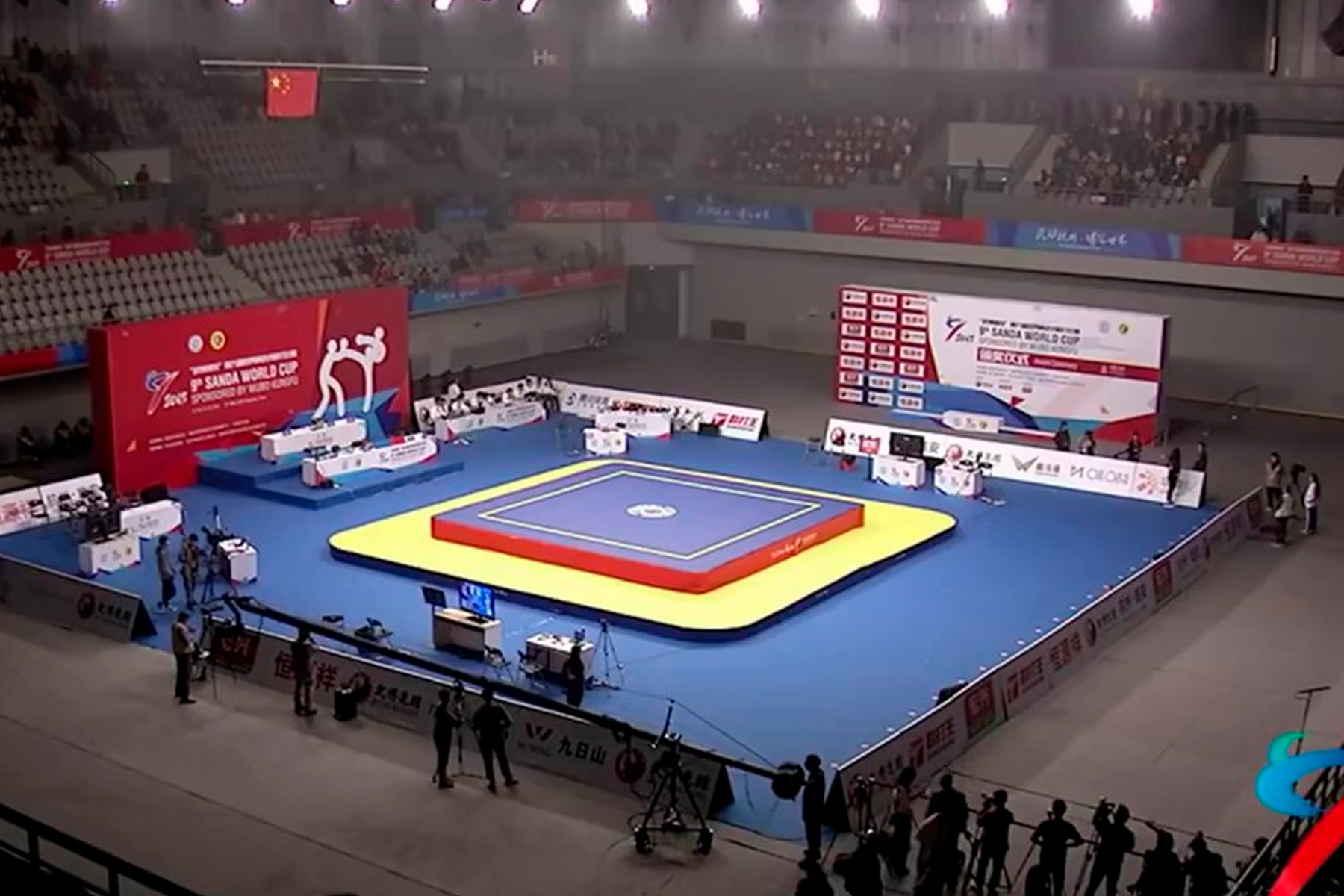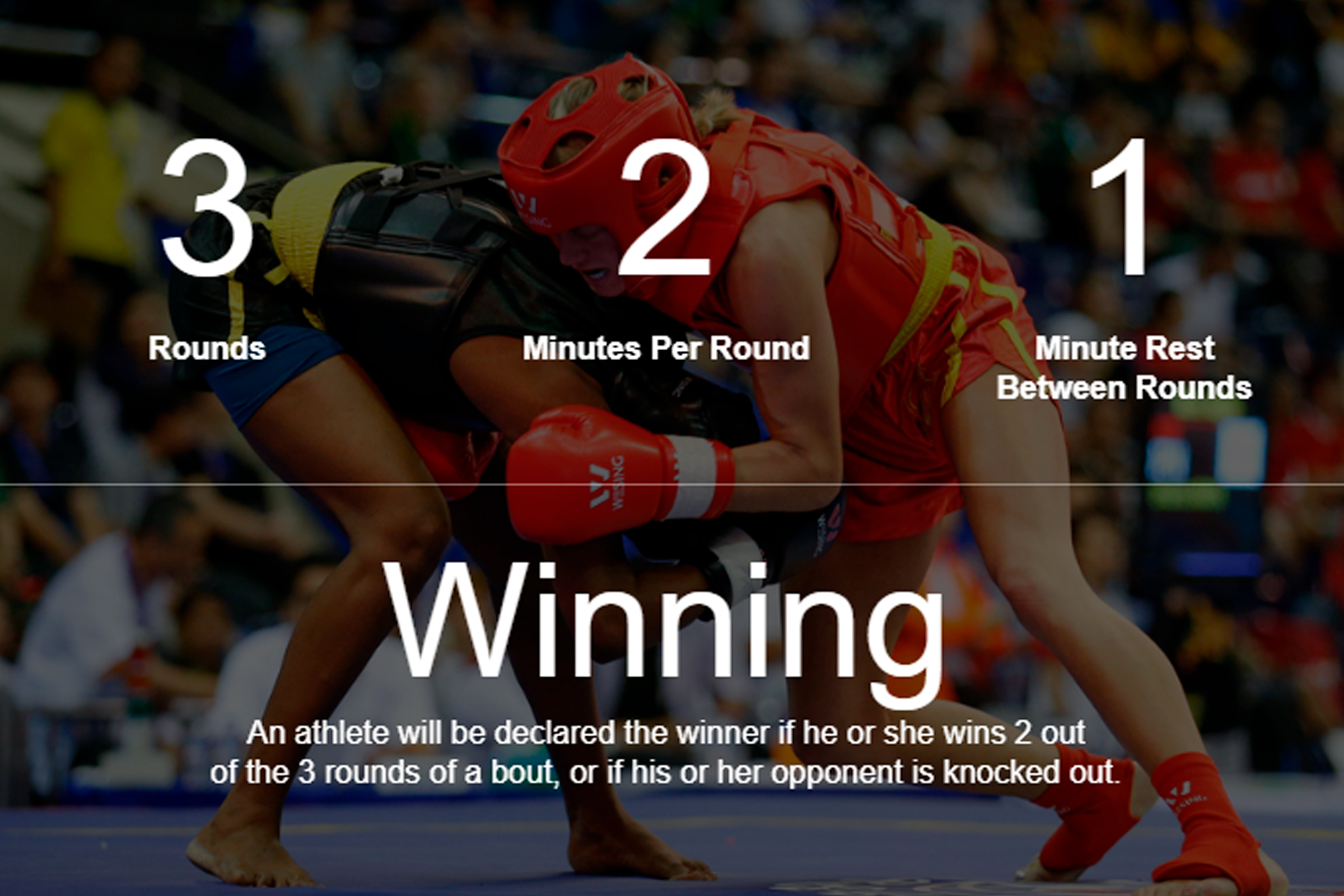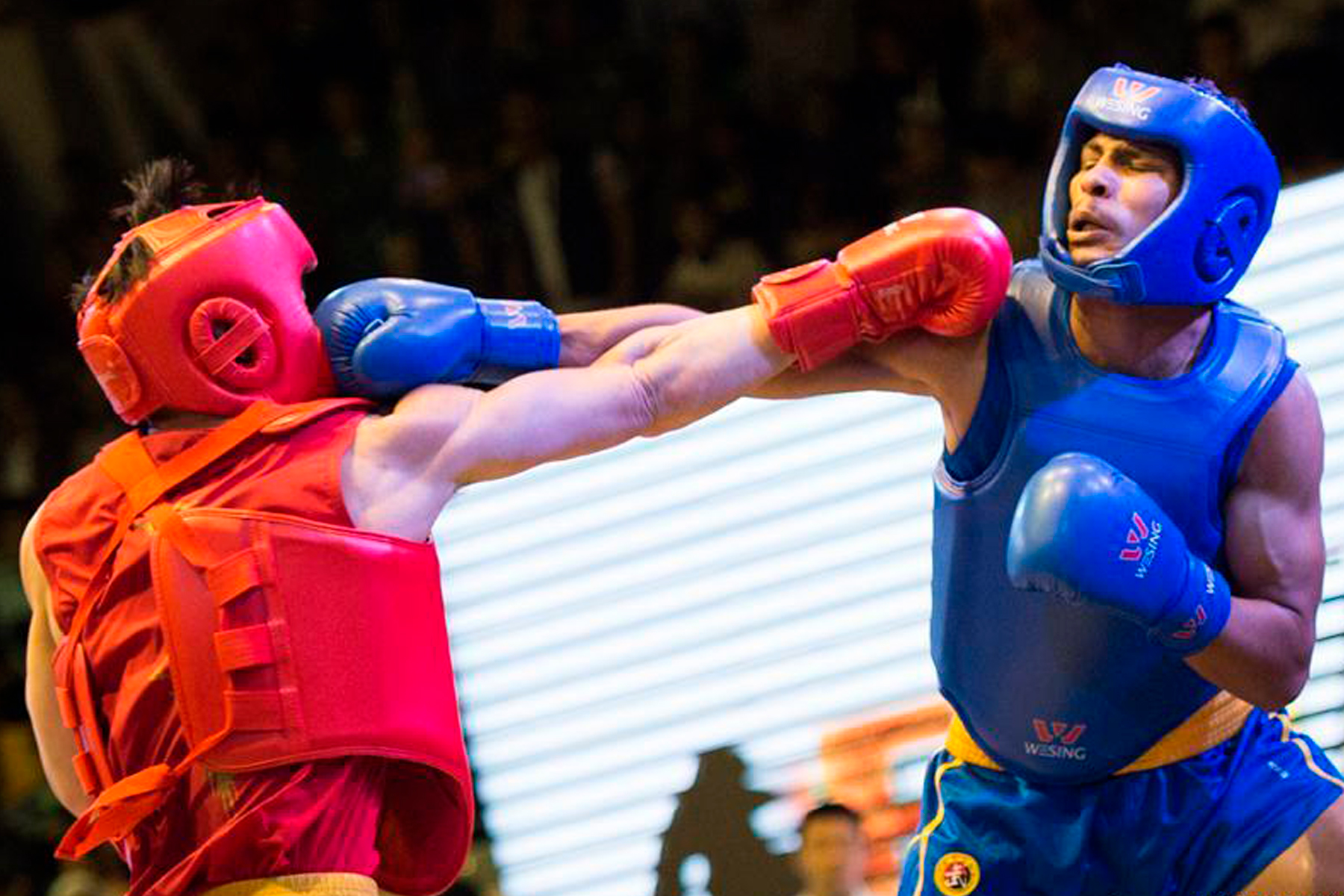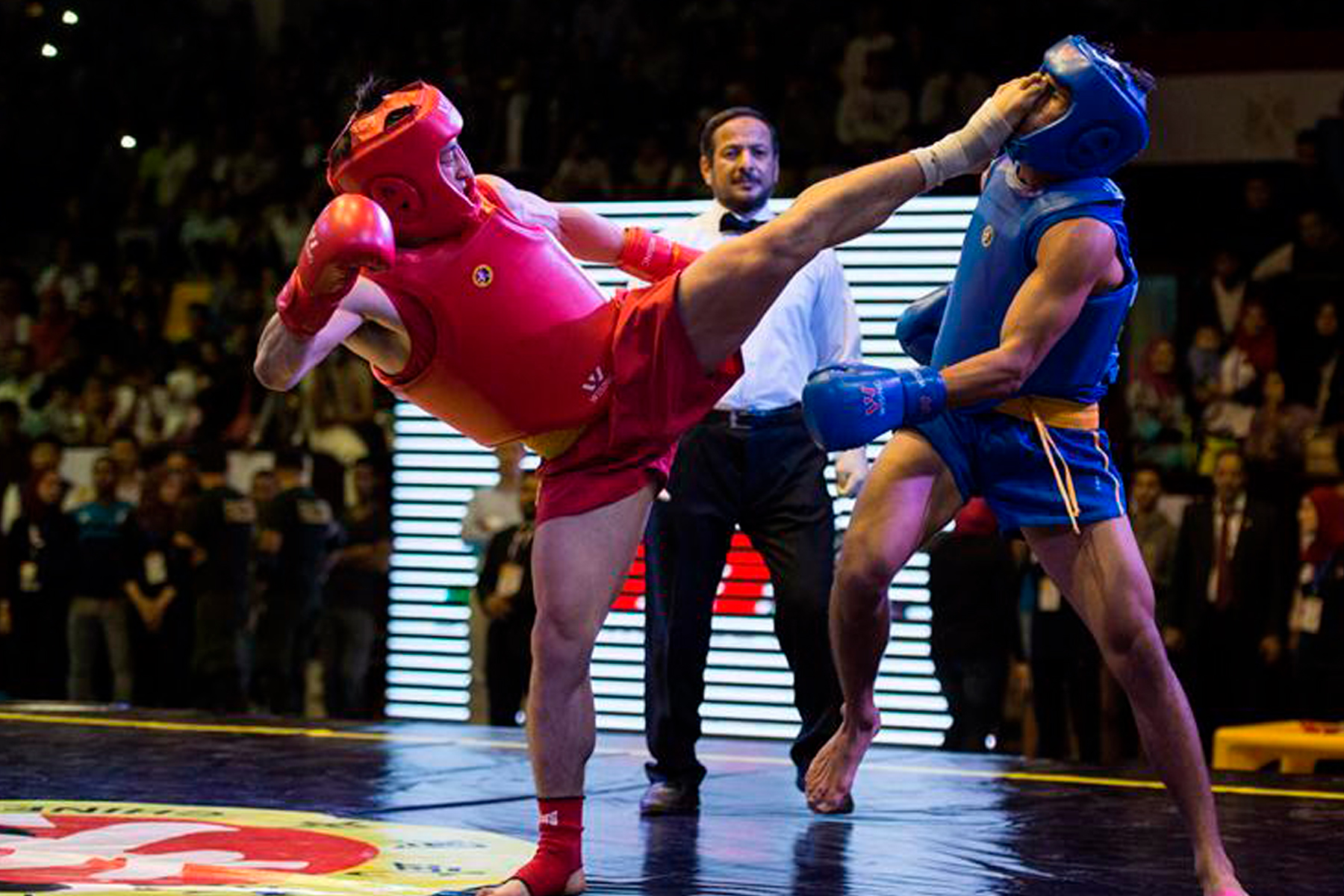Sanda is a modern unarmed combat sport that developed from traditional wushu techniques, and primarily makes use of punching, kicking, throwing, wrestling and defensive techniques.
Competition bouts take place on an elevated platform called a “leitai,” which is 80cm in height, 8m in width and 8m in length, and comprises of a frame covered in high density foam with a canvas cover. On the ground surrounding the platform is a protective cushion that is 30cm in height and 2 meters in width. Competing athletes wear protective gear that includes a headguard, chest protector, and gloves, as well as a mouthguard and a jockstrap.
Competition bouts comprise of 3 rounds in total, each lasting two minutes with a one-minute rest period between rounds. Apart from illegal blows and methods, sanda athletes may employ punching, kicking and throwing techniques from all styles of wushu. Valid striking areas are: the head, the trunk (including the chest, abdomen, waist and back), and the legs. The full-contact bouts are free flowing and exciting, and athletes are awarded points by the sideline judges for successfully-executed techniques based on the scoring criteria. An athlete will be declared the winner if he or she wins 2 out of the 3 rounds of a bout, or if his or her opponent is knocked out.
Sanda competition includes 11 weight categories for men and 7 weight categories for women.




